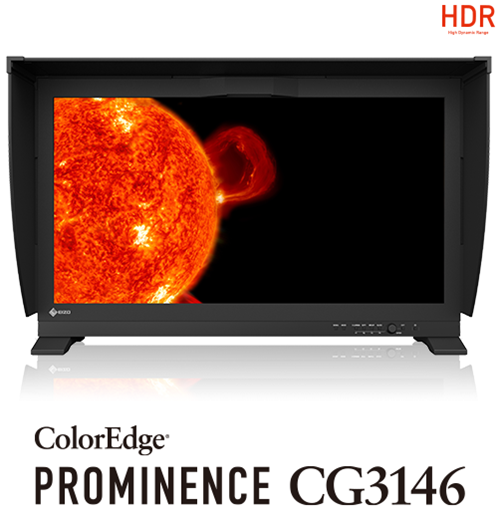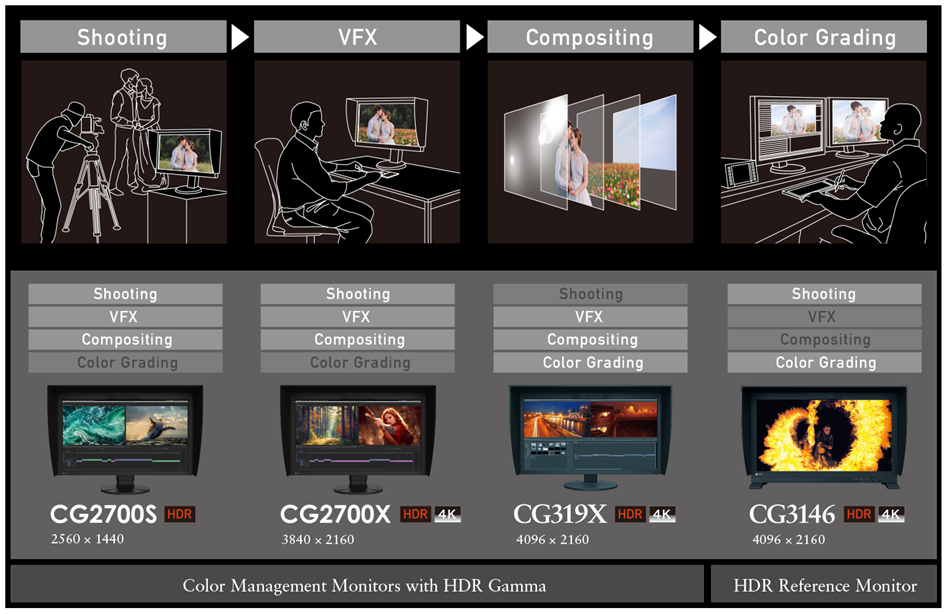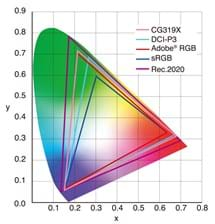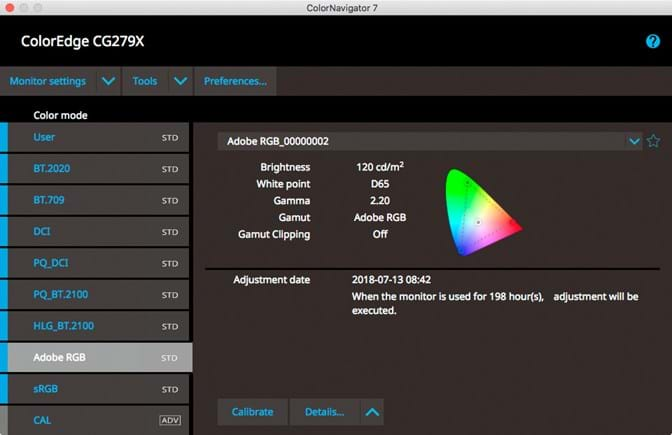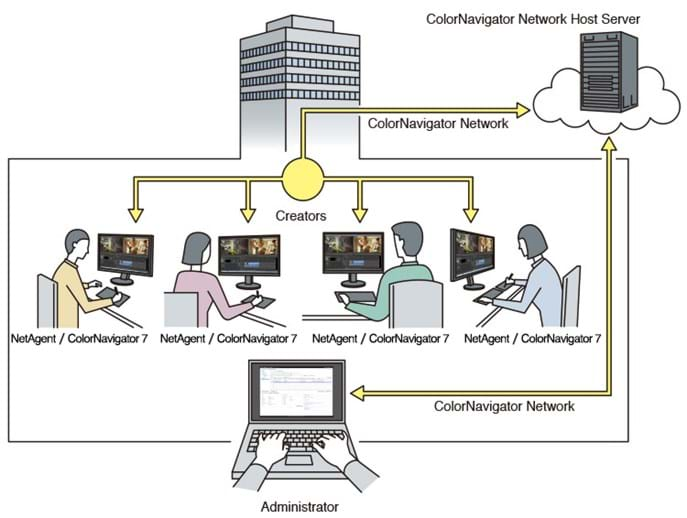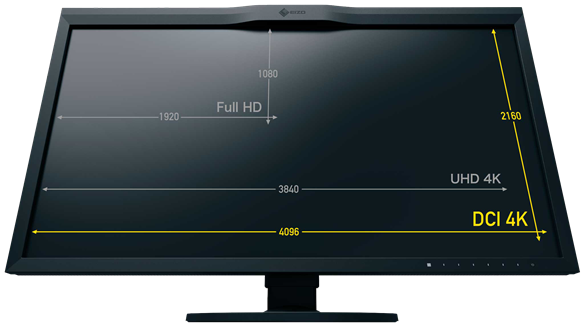Video Production and Post Production Monitors
Professional video monitors, including 4K HDR monitors, with precise colour management and a range of features to meet the needs of agencies and production houses.
EIZO HDR Technology
EIZO's flagship HDR reference monitor is the first monitor to overcome the severe drawbacks of the other HDR panel technologies available today. Building further upon this technology, the ColorEdge PROMINENCE CG3146 is the first true HDR reference monitor in the world to incorporate a built-in calibration sensor for ensuring the ultimate color-accurate and uniform HDR viewing environment. ColorEdge PROMINENCE monitors achieve 1000 cd/m2 brightness and, just as importantly, the required 1mil:1 contrast ratio, making it ideal for color grading in the HDR workflow.
We submitted the CG3146 to a local colour specialist for evaluation. Click here for the report.
> ColorEdge PROMINENCE CG3146 product information
In addition to the ColorEdge PROMINENCE CG3146, EIZO offers HLG (hybrid log-gamma) and PQ (perceptual quantization) curves for many current CG Series monitors. The optimized gamma curves render images to appear more true to how the human eye perceives the real world compared to SDR (Standard Dynamic Range).
Vivid Colors Reproduced to Industry Standards
The wide color gamut of the ColorEdge CG Series faithfully reproduces almost the entire DCI-P3 standard used in digital cinema. It also covers 100% of the Rec. 709, EBU, and SMPTE-C standards and 99% of Adobe® RGB. ColorEdge 4K monitors also include a preset mode for viewing Rec. 2020 contents that are easily accessible via a button on the front of the monitor.
Not applicable to the CG2700 or CG2420.
Convenience and Performance
In compliance with the DCI standards, most ColorEdge CG Series monitors offer a high contrast ratio of 1500:1* for producing true blacks that are otherwise difficult to display on a typical LCD monitor.
When viewing the screen from an angle in a dimly lit room, dark tones typically appear washed out due to the display characteristics of LCD backlights. The CG Series is equipped with a film that allows tones to retain their depth even when viewed from an angle. The CG Series also comes with backlit control buttons to improve visibility in dark studio environments.
* Typical value when DUE Priority is set to "Brightness".
Simple and Precise Color Management
ColorNavigator 7 is the latest calibration and quality control software for ColorEdge color management monitors. It combines all the features of EIZO's previous color management software, ColorNavigator 6 and ColorNavigator NX, to create a new and improved solution for creatives in a range of fields. The proprietary software makes calibration simple and produces predictable results for photography, design, print, and video creation.
ColorNavigator Network provides centralized quality control of ColorEdge monitors that have ColorNavigator 7 installed. Administrators can set color modes, schedule self-calibration, register or adjust asset management settings, and other tasks whether the monitors are local or remote. ColorNavigator Network is hosted on a secure cloud server to free you from the initial investment and running costs of providing your own server.
4K Resolution
The ColorEdge 4K series offers both DCI 4K standard (4096 × 2160) and 4K UHD (3840 × 2160) models. Whether you are creating, editing, or checking your work, the pixel density of these monitors gives you the high performance needed for expressing your creativity in extreme detail.
Used by Professional Creatives Worldwide
In 2015, EIZO established the ColorEdge Ambassador Program which showcases professional photographers, designers, filmmakers, and other creatives who are committed to inspiring and educating artists around the world. EIZO's Ambassadors – all of them ColorEdge users – are passionately dedicated to their craft and prepare the best equipment for realizing their creative vision.
To see our ColorEdge Ambassadors, click here.
What post-production needs in an LCD Monitor:
- Wide colour gamut for those working on feature films (standard gamut is OK for those only working in HD Rec709)
- Absolute colour accuracy (eg, visible shadow & highlight detail, no detail 'blowouts')
- Colour consistency over time
- High bit programmable LUT / cal slots
- Low black level (hard to do in LCD)
- 10-bit panel
- Stress-free video signal display, scaling and deinterlacing



